The first Japanese-built destroyers of the MSDF, laid down at Mitsubishi Zosen in Nagasaki for Harukaze and Shin Mistubishi HI Kobe for Yukikaze. They were designed and tailored for anti-submarine warfare. The majority of equipment, sensors and armamenr were from the US according to the Mutual Defense Assistance Agreement signed with Japan. These systems included notably the AN/SPS-6 air-search radar, AN/SPS-5 surface-search radar, QHB search sonar, and QDA attack sonar. But overall with their three 5-in/38 guns of WW2 fame and impressive, but classic ASW suite, they were conventional destroyers, in many way recalling the Fletcher class.
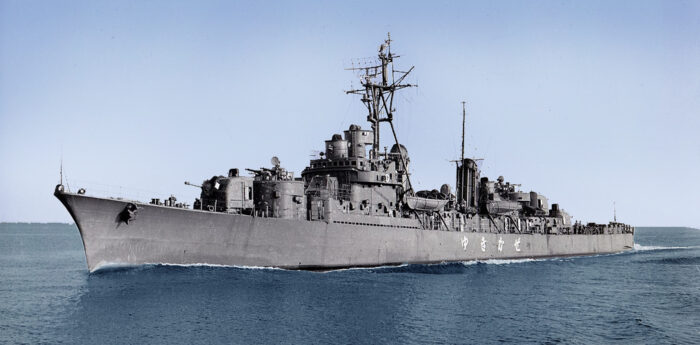
The Harukaze were armed with three 5-in/38 Mark 12 guns on Mark 30 single mounts as main armament, all controlled by a Mark 51 director, all WW2 legacy systems. So as soon as possible, the JMSDF replaced the director by the brand new Swedish GFCS from Contraves on Harukaze. Yukikaze however had the Mark 57 director. K-guns and depth charge rackswere reduced and Mark 32 torpedoes installed with Mark 2 side launchers as a good complement to the hadgehogs to hunt down Soviet Pacific war submarines. With their great speed the could keep up even with November class SSNs.
Development
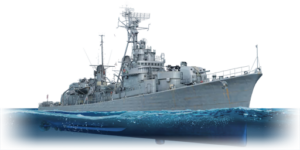 The Harukaze-class destroyer were a stepping stone for post-WW2 Japanese industry. Powerful Zaibatsus (industrial groups with ancient clans roots many) had been cranking up a massive effort from 1916 all the way up to 1945 to expand the IJN. After the biombing campaign and startved of materials and resources, the whole industry was in disarray postwar, but the context rapidly changed radically with the new world order articlated between the two supergiants. With an US naval industry already well taxed with ongoing programs, and to renew this industrial basis the government proposed to return to a locally built program for the next ships of the JMSDF, step by step.
The Harukaze-class destroyer were a stepping stone for post-WW2 Japanese industry. Powerful Zaibatsus (industrial groups with ancient clans roots many) had been cranking up a massive effort from 1916 all the way up to 1945 to expand the IJN. After the biombing campaign and startved of materials and resources, the whole industry was in disarray postwar, but the context rapidly changed radically with the new world order articlated between the two supergiants. With an US naval industry already well taxed with ongoing programs, and to renew this industrial basis the government proposed to return to a locally built program for the next ships of the JMSDF, step by step.
The first JMSDF destroyers in service were formed US ships, the ex-Fletcher Ariake and Yugure (ex. Heywood L. Edwards and Richard P. Leary) and the Asakaze class, former prewar Gleaves class destroyer, ex-USS Ellyson and ex-USS Malcomb. Along with the ASAHI class Frigates, ex-Cannon class (DER) escort destroyers, they formed the core of a navy which was supposed to take over the task of defendine Japanese waters alongside the US 7th fleet. These ships were transferred in 1954-59, but even before in 1953 it was understood that they would be interim ships, intended for replacement by scores of Japanese designed and built vessels. On the long run it was hoped also to developed a local sensors and armament industry for equipment, but it would take at least a decade or more.
Using some existing plans, US shipbuilding influence, and an organization around US sensors and armament, the first indigenous post-World War II Japanese destroyer class, financed by MDAP to perform anti-submarine warfare were authorized under the 1953 fiscal year. In the programme they were called the ‘A type’ “high-speed escort vessels”. They would be conservative in size, armament but electric welding was extensively used. It was not new, developed already in the 1920s to “cheat” in construction on tonnage limits.
These new destroyers built under the 1953 programme would be (and this was definitely a US practice) fitted with different propulsion plants for study purpose. Thus, both sister ships would differ at least in performances. Because all their equipment was supplied from the United States as granted by the Mutual Defense Assistance Agreement. The Sensor systems were standard in the U.S. at that time such as the AN/SPS-6 air-search radar and the the AN/SPS-5 surface-search radar, QHB search sonar, and QDA attack sonar. These were the latest kit, in contrast to most of the armament and associated fire control systems.
Design of the class
Hull and general design
The Harukaze class were shaped in a very peculiar way compared to WW2 designs. They were smaller than the Fletchers, on a displacement of 1,700 t (1,673 long tons) standard and 2,340 t (2,303 long tons) fully loaded. In overlal lenght they measured 106.0 m (347.8 ft) for a beam of 10.5 m (34 ft) and draught of 6.4 m (21 ft). The hull was fluch deck and the prow was shaped as a mix between US and Japane types. A transom stern closed the hull aft and anti-collision bars fitted at the stern. Like modernized Fletchers DDE they had two raked, capped funnels, and a solid tripod supporting all sensors. A small half mast for holding radio cables was located at the base of the aft funnel.
The superstructure was elongated like on US destroyers, without cuts as they had no torpedo tubes. The arament organization was standard with a main gun, followed by a forward AA mount, the two hedgehogs. The bridge also a mix between the Fletcher’s and Japanese destroyers designs. The most US-inflience par tof the hull design was the addition of bulwarks anchored on the forward structure, a feature typical of US flish deck designs. The choice of having both main guns lopcated aft was to alleviate stability issues, and the whole aft poop deck was devoted to old school ASW armament, depht charge launchers and racks.
Powerplant
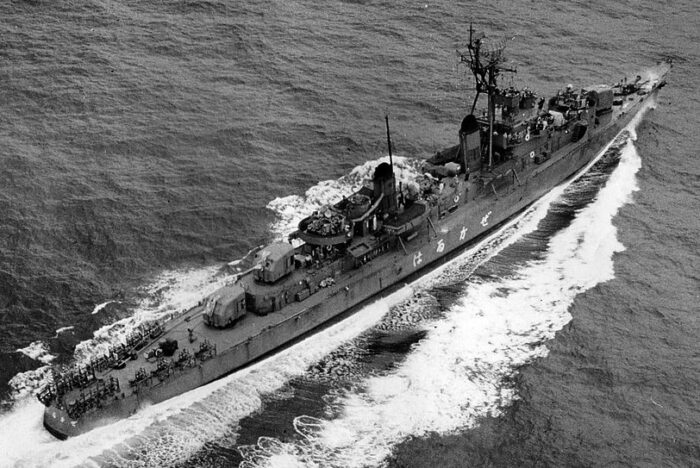
Propulsion was classic, with 2 shafts driven by Steam turbines for c15,000ps (see notes) for a top speed of 30 knots (56 km/h; 35 mph). For range, they carried 557t oil for 6000 nautical miles ay 18 kts. They tested different engine configurations as a test.
DD101 Harukaze received two sets of Mitsubishi/Escher Weiss geared steam turbines fed by two 2 Hitachi/Babcock boilers.
DD102 Yukikaze received instead Westinghouse geared steam turbines and two Combustion Engineering boilers.
Armament
Three 5-inch/38 Mark 12 in Mark 30 single mounts, controlled by a Mark 51 director.
The JMSDF wasn’t satisfied with performance of the director, so later the Mark 51 was replaced by the Swedish advanced GFCS developed by Contraves (Harukaze) or American Mark 57 (Yukikaze). At the same time, K-guns and depth charge racks were reduced by half and replaced by Mark 32 torpedoes with two Mark 2 over-the-side launchers.
5-inch/38 caliber Mk.12 guns
Basically the same WW2 models, completed with their enclosed Mark 12 Turrets as on the Fletcher class. Full detail. More.
Bofors 40 mm
The destroyers Anti-aircraft guns comprised two twin 40mm/60 Mk 2 on the forward and aft mounts, bot axial and high for best angles.
No more precision on these. They were fed by 4-rounds magazines, for a fire rate of 156 shots/min and 8,000 rounds total, radar-assisted (main FCS).
Hedgehog anti-submarine mortars
Standard WW2 models, two 24x 178mm bombs for spigots mortars, Hedgehog Mk 11 ASW Rocket Launchers were installed on a platform at the foor of the bridge, behind the AA mount.
Mark 2 over-the-side launchers
Launching the MK-43 Mod-0, 12.75-inch acoustic torpedo or possibly the Mk 44 also produced in Japan later.
Not the Mark 32 surface vessel torpedo tubes. The latter were installed on the Tachikaze and Hatakaze-class destroyers.
K-gun
K-Guns, depth charge throwers WW2 type likely K Guns Mark 6. capable of 60 to 150 yards (55 to 137 m) in just 3.4 to 5.1 seconds. Placed in three systems aft on deck abaft the deckhouse. The charges were 65 lbs. (29.5 kg) with increasing range, using black powder (settings 60, 90 and 150 yards (55, 82 and 137 m).
There were four systems at the poop deck aft eitehr side. They could have been provided with the later war (service 1946) Mark 16. A 435 lbs. (197 kg) model carrying a 295 lbs. (134 kg) Torpex charge with a sink Rate og 31 fps (9.4 mps) and max setting of 2,500 feet (762 m). Mod 0 was hydrostatic and Mod 1 was acoustic.
Depth charge rack
Standard WW2 type 5-DCs rack at the poop, probably not of the Mark 6 which could hold five 300 lbs. (136 kg) type DC, but rather the Mark 3 while could hold eight 300 lbs. (136 kg) type DCs.
Uprades
In 1959, both destroyers saw the addition of two 483 Mk 4 Torpedo Tubes. In the early 1970s, their SPS-5 radar, SQS-29 sonar were removed and replaced by an OPS-37 radar and SQS-11 sonar. In 1975, Yukikaze saw the removal of a 127mm/38 4 DCT, 1 DCR,; + SQS-30J sonar with towed passive sonar array
1980, Yukikaze saw the removal of a 127mm/38 (No2) main gun and a quad 40mm/60 AA Bofors for the addtion of a SQA-4 sonar.
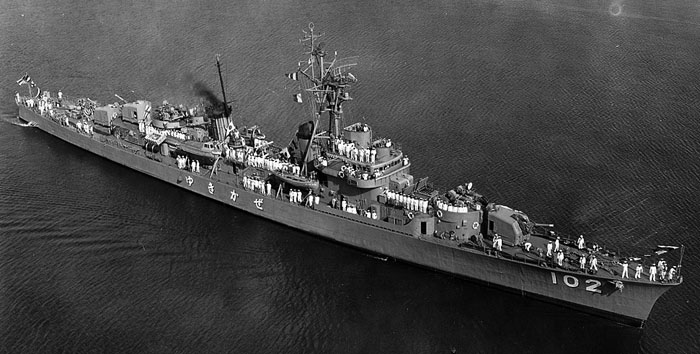
Sensors
AN/SPS-6
Air search radar developed as a successor to the SR-3/R-6 L Band ASR (air search radar) of WW2. Parabolic antenna using a horn antenna as primary radiation source, modular design for configuration chanegs. The antenna was 18 ft (5,500 mm) x 5 ft (1,500 mm), fpr a beamwidth of 3° x 10°, but could be detected at 80 nmi (150 km) away.
OPS-3
Surface-search radar, 2D, manufactured by Japan Radio Company. Installed as an anti-ship search radar for Maritime Self-Defense Force’s escort ships. Variations include OPS-18-1 and OPS-18-3.
Mark.51 fire-control system
The Mark 51 Gun Fire Control System. Associated with the 5-in/38 main guns. They transmitted their bearing and elevation position by synchros, using a rate deviation gyro lagging the line of sight to the target via two electrical signals received by the computers for prediction of the future position of the target. More
Mk.63 fire-control system
The Mark 63 Gun Fire Control System combined a AN/SPG-34 radar tracker and Mark 29 gun sight. Used to control the twin Bofors mounts. The Mark 63 was developed as a new generation GFCS with a particular focus on attack countermeasures.
QHBa sonar
QHBa equipment consists of the following five major units: Indicator control, Transmitter-receiver, Transducer, Scanning switch assembly, Data converter.
More data
AN/SQS-26J sonar
The AN/SQS-26 was a 27,215 kg (59,999 lb) system, operated as passive sonar on the 1.5 kHz frequency or active sonar at 3–4 kHz. Max output 240 kW, range from 18 to 64 km (11 to 40 mi). Direct path, bottom reflected, passive and convergence zone (CZ) capabilities.
QDA sonar
No data.
Active protection
OLR-3/4
No Data.
Acoustic torpedo
Likely T-Mk 6 Fanfare. This towed sonar decoy was developed after WW2 by the USN to replaced the Foxer noisemaker. It producedg a sound similar to its own ship propeller, rather than wideband noise and could be setup to the specific tone of each ship.

⚙ specifications |
|
| Displacement | 1,700 t (1,673 long tons) standard, 2,340 t (2,303 long tons) full load |
| Dimensions | 106 x 10.5 x 6.4m (347.8 ft x 34 ft x 21 ft) |
| Propulsion | 2× Steam turbines (15,000hp), 2x boilers |
| Speed | 30 knots (56 km/h; 35 mph) |
| Range | 557t oil, 6,000 nm/18 kts |
| Armament | 3× 5-in/38, 8× Bofors AA, 2× Hedgehog, 2x Mark 32 TTs, 8× K-guns, DCT |
| Protection | OLR-3, Acoustic torpedo |
| Sensors | N/SPS-6 ASR, OPS-3 SSR, Mk.51 FCR, Mk.63 FCR, QHBa, QDA sonar |
| Crew | 240 |
Career of the Harukaze class
 DD-101 Harukaze
DD-101 Harukaze
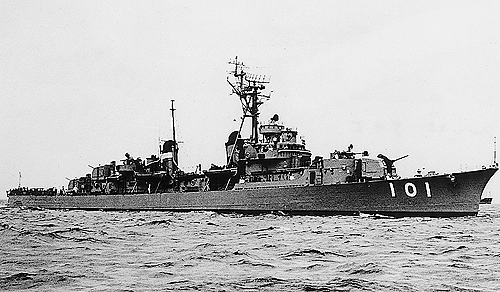
DD-101 or ASU-7002 Harukaze was laid down on 1954, launched on 20 September 1955, completed on 1956 at Mitsubishi shipyard, Nagasaki. Hull number was DD-101. She entered service on 26 April with the Sasebo District Force. On 1 April 1957 she entered the 2nd Escort Group as flagship.
From 14 January to 25 February 1958, she made the first JMSDF fist pelagic training to Hawaii, still as flagship, from 6 August to 10 October. She also participated in the second of such training voyages to Hawaii and North America.
In March 1958 she had her first refit. As a modernizaiton, the otiginal Mark 51, 5-inch gun fire control system was replaced by the Mk.51 updated with a Swiss “contrabass” fire control system. On 1 April she entered the 1st Escort Group as flagship, homeported to Yokosuka. On the 14 of December 1958, she was nicknamed “Porcupine johnson” by a British sailor trabnsferred the British Royal Navy.
From 20 January to 20 March 1959 she wa refitted at Mitsubishi Heavy Industries, Nagasaki. Four rear depth charge projectors and a depth charge projection rail were removed and instead she received two Mk2 short torpedo depth charge, one on each side. The QHBa active hull sonar was replaced by the SQS-11A, the QDA passive sonar was changed to the SQA-4. She was given a new IFF receptor, and new electronic warfare suite, OLR-4, as well as air conditioning and ventilation equipment, notably in the battle compartment rooms. She wa slikely made NBC compliant as well.
In February 1960, she was equpped with an offshore refueling device and on 1 February 1961, she entered the 2nd Escort Group as a flagship, this time based at Sasebo. In March 1967, her sonar was updated again to the SQS-30 and she was transferred to the Sasebo District Force, from 15 October 1969.
On 1 February 1971, she was transferred to the 12th escort corps, part of the 3rd escort corps group with her sister JDS Yukikaze. First time they operated together.
On 16 December 1973 the 12th Escort Corps was disbanded and she ended in 1st Submarine Corps under direct control, transferred to the port of Wu. In order to engage in submarine training support mission her stern depth charge projector and depth charge racks were removed. She received gear for training torpedo launched and recovery plus torpedo loading mounts.
On 27 March 1981, she was demoted to a training auxiliary ship, number was changed to ASU-7002.
She was decommissioned on 5 March 1985. Until November 2001, she was moored at the Maritime Self-Defense Force 1st Service School. This was a special pier. But she was uultimately sold for BU due to significant corrosion, dismantled after leaving the area on the 19th.
 DD-102 Yukikaze
DD-102 Yukikaze
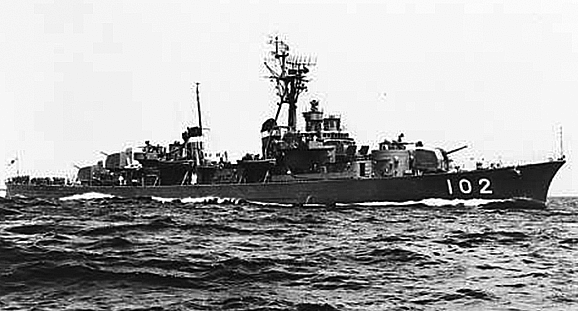
DD-102/ASU-7003, Yukikaze was laid down at the Mitsubishi shipyard in Nagasaki on 1954, launched on 20 August 1955 and completed on 1956. Hull number was DD-102 and she entered service on 31 July, incorporated into the Yokosuka District Force. On 1 April 1957, she became flagship of the 2nd Self-Defense Fleet and flagship of the 1st Escort Group, tender guard ship JDS Keyaki.
From 10 January to 26 March 1959, she was overhauled at the Ishikawajima Heavy Industries, Tokyo, with four aft depth charge projectors and one depth charge rack removed as well as their Mk.2 short torpedo launchers. Instead she received standard triple Mk.32 torpedo launchers on either side and she obtaçned the new hull active sonar SQS-11A and passive sonar SQR-4/SQA-4. The original 5-inch gun fire control system was upgraded unlike her sister to the Mk.57. In addition, she had a new identification friend or foe system and new electronic warfare OLR-4, system, air conditioning and ventilation equipment as well as NBC proofing. On 1 July 1959, the Self-Defense Fleet Command disbanded the 1st Escort Group Command so Yukikaze became flagship under the direct control of the Self-Defense Fleet staff.
In February 1960, she had offshore refueling system installed. From 18 May to 22 July she took part in the 4th training cruise to Hawaii and the west coast of the United States. On 26 July 1961, she was relieved as flagship by the new JDS Akizuki, ransferred to the 1st Escort Group as flagship.
In 1963, Yukikaze became a filming location for the 1964 movie Destroyer Yukikaze (駆逐艦雪風), masquerading as the predecessor destroyer Yukikaze.
On 10 December 1964, Yukikaze was incorporated into the 3rd Escort Group as a flagship and the fixed port was transferred to Maizuru.
In March 1969, Maizuru Heavy Industries carried out a modernization renovation to replace the sonar with SQS-29J.
On 1 February 1971, she was transferred to the 12th Escort Corps, newly formed under the 3rd Escort Corps group with her sister JDS Harukaze, and transferred to Sasebo. They formed an escort force together for the first time. This also enabled more precise comparative tests.
On 16 December 1973, the 12th Escort Corps was disbanded, transferred to the Practical Experiment Corps. She was transferred to Yokosuka.
After the Yuyo Maru No.10 Inciden of 9 November 1974, Yukikaze and the escort vessels Haruna, Takatsuki, Narushio and Mochizuki, was dispatched on 26 November. Yukikaze arrived at the scene and fired to sink the stricken Yuyo Maru No.10 on the 28th.
In January 1976, Yukikaze was overhauled for practical testing at Sumitomo Heavy Industries Uraga Shipyard. Her 5-inch No. 3 turret, K gun and depth charge rack were removed. Sehe was fitted instead with a towed passive sonar at the stern, and was engaged in tests of towed passive sonar for the Navy.
On 1 July 1978, the test Team was integrated into the Development Guidance Group, and she resumed operational testings campaigns.
On 27 March 1981, she was converted to a training auxiliary ship, hull number ASU-7003.
She was decommissioned on 27 March 1985, sunk off Noto Peninsula as target, in August 1985.
Read More/Src

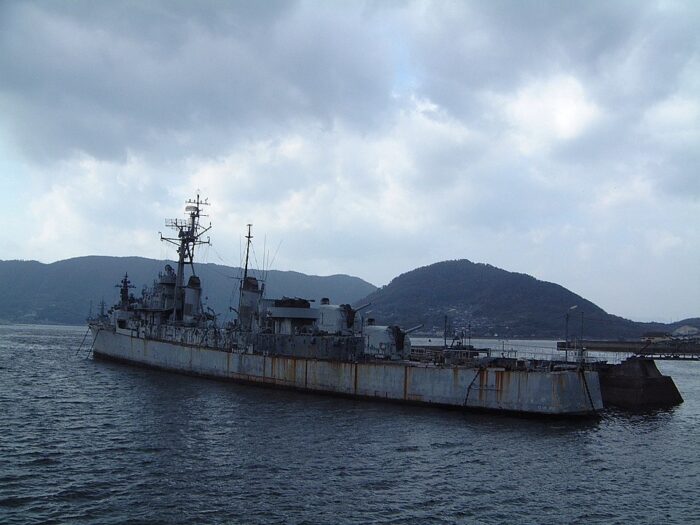
Books
Tomohiko Tada (March 2010). “4. Radar/ECM/ESM (Shipboard weapons of JMSDF 1952-2010)”. Ships of the World (721). Kaijin-sha: 100–105.
“3. Underwater weapons (Shipboard weapons of JMSDF 1952-2010)”. Ships of the World (721). Kaijin-sha: 94–99. March 2010.
“2. Guns (Shipboard weapons of JMSDF 1952-2010)”. Ships of the World (721). Kaijin-sha: 88–93. March 2010.
Links
on en.wikipedia.org Harukaze-class_destroyer
on commons.wikimedia.org/
navypedia.org/ harukaze.htm
seaforces.org/ Harukaze-class.htm
hush.gooside.com/ Yukikaze.html
admiral31.world.coocan.jp/
Model Kits
https://www.klueser.de/kit.php?index=3782&language=en

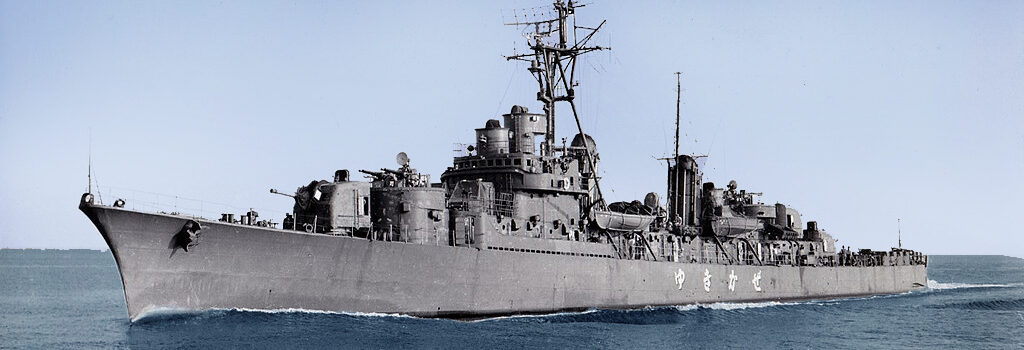


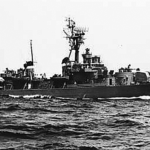
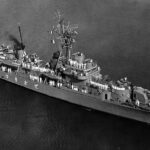
 Latest Facebook Entry -
Latest Facebook Entry -  X(Tweeter) Naval Encyclopedia's deck archive
X(Tweeter) Naval Encyclopedia's deck archive Instagram (@navalencyc)
Instagram (@navalencyc)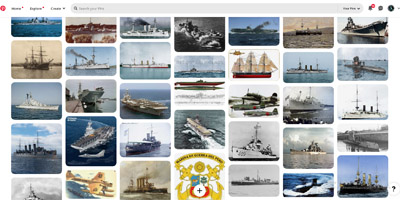

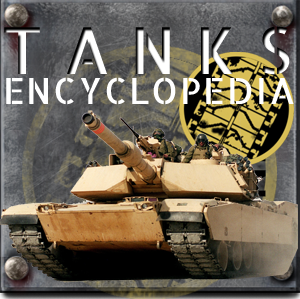
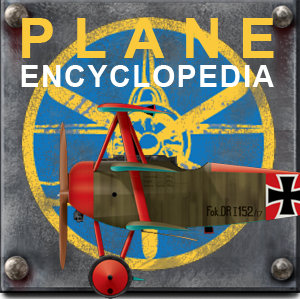
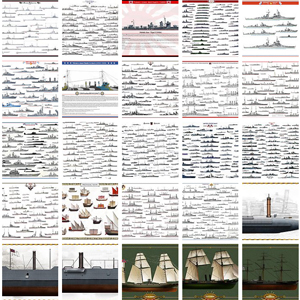

 French Navy
French Navy Royal Navy
Royal Navy Russian Navy
Russian Navy Armada Espanola
Armada Espanola Austrian Navy
Austrian Navy K.u.K. Kriegsmarine
K.u.K. Kriegsmarine Dansk Marine
Dansk Marine Nautiko Hellenon
Nautiko Hellenon Koninklije Marine 1870
Koninklije Marine 1870 Marinha do Brasil
Marinha do Brasil Osmanlı Donanması
Osmanlı Donanması Marina Do Peru
Marina Do Peru Marinha do Portugal
Marinha do Portugal Regia Marina 1870
Regia Marina 1870 Nihhon Kaigun 1870
Nihhon Kaigun 1870 Preußische Marine 1870
Preußische Marine 1870 Russkiy Flot 1870
Russkiy Flot 1870 Svenska marinen
Svenska marinen Søværnet
Søværnet Union Navy
Union Navy Confederate Navy
Confederate Navy Armada de Argentina
Armada de Argentina Imperial Chinese Navy
Imperial Chinese Navy Marinha do Portugal
Marinha do Portugal Mexico
Mexico Kaiserliche Marine
Kaiserliche Marine 1898 US Navy
1898 US Navy Sovietskiy Flot
Sovietskiy Flot Royal Canadian Navy
Royal Canadian Navy Royal Australian Navy
Royal Australian Navy RNZN Fleet
RNZN Fleet Chinese Navy 1937
Chinese Navy 1937 Kriegsmarine
Kriegsmarine Chilean Navy
Chilean Navy Danish Navy
Danish Navy Finnish Navy
Finnish Navy Hellenic Navy
Hellenic Navy Polish Navy
Polish Navy Romanian Navy
Romanian Navy Turkish Navy
Turkish Navy Royal Yugoslav Navy
Royal Yugoslav Navy Royal Thai Navy
Royal Thai Navy Minor Navies
Minor Navies Albania
Albania Austria
Austria Belgium
Belgium Columbia
Columbia Costa Rica
Costa Rica Cuba
Cuba Czechoslovakia
Czechoslovakia Dominican Republic
Dominican Republic Haiti
Haiti Hungary
Hungary Honduras
Honduras Estonia
Estonia Iceland
Iceland Eire
Eire Equador
Equador Iran
Iran Iraq
Iraq Latvia
Latvia Liberia
Liberia Lithuania
Lithuania Mandchukuo
Mandchukuo Morocco
Morocco Nicaragua
Nicaragua Persia
Persia San Salvador
San Salvador Sarawak
Sarawak Uruguay
Uruguay Venezuela
Venezuela Zanzibar
Zanzibar Warsaw Pact Navies
Warsaw Pact Navies Bulgaria
Bulgaria Hungary
Hungary

 Bundesmarine
Bundesmarine Dutch Navy
Dutch Navy Hellenic Navy
Hellenic Navy Marina Militare
Marina Militare Yugoslav Navy
Yugoslav Navy Chinese Navy
Chinese Navy Indian Navy
Indian Navy Indonesian Navy
Indonesian Navy JMSDF
JMSDF North Korean Navy
North Korean Navy Pakistani Navy
Pakistani Navy Philippines Navy
Philippines Navy ROKN
ROKN Rep. of Singapore Navy
Rep. of Singapore Navy Taiwanese Navy
Taiwanese Navy IDF Navy
IDF Navy Saudi Navy
Saudi Navy Royal New Zealand Navy
Royal New Zealand Navy Egyptian Navy
Egyptian Navy South African Navy
South African Navy






























 Ukrainian Navy
Ukrainian Navy dbodesign
dbodesign